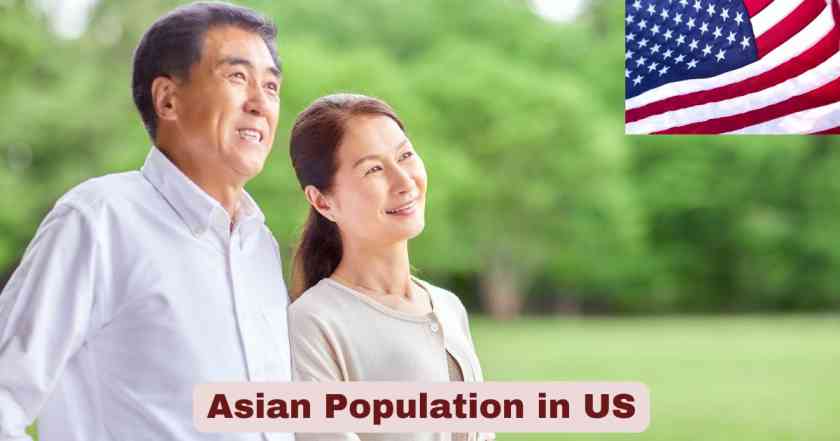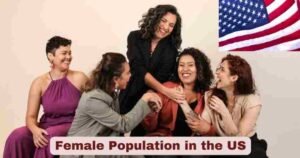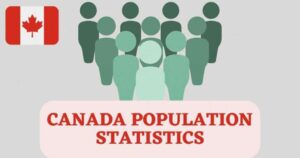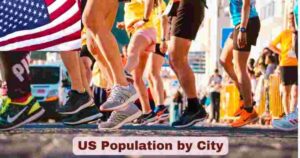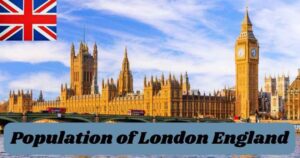Asian Population in US 2025
The Asian population in the United States has experienced remarkable transformation over the past decade, emerging as one of the fastest-growing demographic groups in the nation. According to the U.S. Census Bureau’s 2023 American Community Survey, approximately 24.5 million residents identify as Asian alone or in combination with another race, representing a significant portion of America’s diverse population landscape. This growth trajectory reflects not only immigration patterns but also natural population increases and changing identification trends among multiracial individuals who embrace their Asian heritage.
The significance of the Asian American community in 2025 extends far beyond mere numbers, as this demographic continues to reshape American society through economic contributions, educational achievements, and cultural influence. From metropolitan hubs on both coasts to emerging communities in the heartland, Asian Americans have established vibrant enclaves while simultaneously integrating into the broader fabric of American life. The community’s diversity spans more than 20 distinct ethnic origins, each bringing unique traditions, languages, and perspectives that collectively enrich the nation’s multicultural identity. Understanding the demographics, economic status, and social characteristics of this population provides essential insights into contemporary American society and future demographic trends.
Key Stats & Facts About Asian Population in the United States in 2025
| Demographic Indicator | 2025 Statistics | Category |
|---|---|---|
| Total Asian Alone-or-in-Combination Population | 24.5 million | Population Size |
| Largest Asian Ethnic Group | Chinese (except Taiwanese): 5.5 million | Ethnic Composition |
| Second Largest Group | Asian Indian: 5.2 million | Ethnic Composition |
| Third Largest Group | Filipino: 4.6 million | Ethnic Composition |
| Vietnamese Population | 2.3 million | Ethnic Composition |
| Korean Population | 2.0 million | Ethnic Composition |
| Japanese Population | 1.6 million | Ethnic Composition |
| Bachelor’s Degree or Higher | 59.7% (age 25+) | Educational Attainment |
| High School Diploma or Higher | 92.8% (age 25+) | Educational Attainment |
| Military Veterans | 4.9% of population | Military Service |
| Median Household Income (2024) | $108,710 | Economic Status |
| Asian-Owned Firms with Paid Employees | 632,309 (2022) | Business Ownership |
Data Source: U.S. Census Bureau, 2023 American Community Survey 1-Year Estimates, Current Population Survey 2025 Annual Social and Economic Supplement
The statistics presented in this table reveal compelling insights about the Asian American population’s demographic profile in 2025. The Chinese population, excluding Taiwanese Americans, maintains its position as the largest Asian ethnic group with 5.5 million individuals, followed closely by Asian Indians at 5.2 million and Filipinos at 4.6 million. This distribution reflects historical immigration patterns, with Chinese immigration to America dating back to the mid-1800s during the California Gold Rush and transcontinental railroad construction, while significant Asian Indian and Filipino immigration accelerated after the Immigration and Nationality Act of 1965 removed discriminatory national origin quotas.
The educational attainment figures are particularly striking, with 59.7% of Asian Americans age 25 and older holding a bachelor’s degree or higher, substantially exceeding the national average for all Americans. This educational achievement translates into significant economic outcomes, as evidenced by the median household income of $108,710 in 2024, which represents the highest among all racial and ethnic groups in the United States. The Asian American community’s entrepreneurial spirit is demonstrated through 632,309 Asian-owned firms with paid employees as of 2022, contributing billions to the national economy. Meanwhile, 4.9% of Asian Americans serve as military veterans, reflecting ongoing patriotic service and dedication to the nation. The near-universal high school completion rate of 92.8% underscores the community’s strong emphasis on education as a pathway to opportunity and success in American society.
Chinese American Population in the US 2025
The Chinese American community represents the largest Asian ethnic group in the United States in 2025, with a population that has grown substantially over recent decades. This demographic segment has established significant population centers across major metropolitan areas while also expanding into suburban and smaller urban communities nationwide.
| Metric | Statistics (2025) |
|---|---|
| Total Chinese Population (except Taiwanese) | 5.5 million |
| Percentage of Total Asian Population | 22.4% |
| Primary Regions of Concentration | California, New York, Texas |
| Major Metropolitan Areas | Los Angeles, San Francisco Bay Area, New York City |
| Population Growth (2013-2023) | 28.3% increase |
Data Source: U.S. Census Bureau, 2023 American Community Survey, Tables B02018 and B02019
The Chinese American population of 5.5 million in 2025 reflects a remarkable journey that began with the arrival of the first Chinese immigrants on May 7, 1843, and continued through waves of immigration driven by economic opportunities, family reunification, and educational pursuits. The 28.3% population increase between 2013 and 2023 demonstrates sustained growth fueled by both continued immigration and natural population increase within the community. California remains the primary destination for Chinese Americans, particularly in the San Francisco Bay Area where historic Chinatowns have evolved into thriving residential and commercial districts, and in the Los Angeles metropolitan region where communities like Monterey Park and the San Gabriel Valley have become predominantly Chinese American neighborhoods.
The geographic distribution of Chinese Americans extends well beyond traditional coastal enclaves, with significant communities developing in Texas, particularly in Houston and the Dallas-Fort Worth metroplex, where technology and energy sectors have attracted highly educated Chinese immigrants and their families. The community’s composition includes diverse subgroups with roots in mainland China, Hong Kong, and various Southeast Asian nations where ethnic Chinese populations historically settled. This diversity within the broader Chinese American community manifests in linguistic variety, including speakers of Mandarin, Cantonese, Hokkien, and other Chinese dialects, as well as in cultural practices and organizational affiliations. The entrepreneurial legacy continues with Chinese American-owned businesses ranging from traditional restaurants and grocery stores to high-tech startups and professional service firms, contributing significantly to local and national economies.
Asian Indian Population in the US 2025
The Asian Indian American population has emerged as the second-largest Asian ethnic group in the United States, representing a dynamic and rapidly growing community that has made substantial contributions to American society across multiple sectors including technology, medicine, business, and academia.
| Demographic Characteristic | 2025 Data |
|---|---|
| Total Asian Indian Population | 5.2 million |
| Percentage of Total Asian Population | 21.2% |
| Primary Settlement States | California, Texas, New Jersey, New York, Illinois |
| Major Metropolitan Concentrations | Silicon Valley, New York-New Jersey, Houston, Chicago |
| Growth Rate (2013-2023) | 51.7% increase |
Data Source: U.S. Census Bureau, 2023 American Community Survey
The Asian Indian American community’s population of 5.2 million represents one of the most remarkable demographic transformations in recent American immigration history. The 51.7% growth rate between 2013 and 2023 outpaces virtually all other major ethnic groups, driven primarily by high-skilled immigration through H-1B visas, family reunification programs, and student visas that often lead to permanent residency. This community exhibits exceptional educational attainment levels, with a particularly high concentration of individuals holding advanced degrees in STEM fields (Science, Technology, Engineering, and Mathematics), medicine, and business administration.
Silicon Valley has become synonymous with Asian Indian American professional success, where individuals of Indian origin have founded numerous technology companies and hold leadership positions in major corporations like Google, Microsoft, and Adobe. The New York-New Jersey metropolitan area hosts the largest concentration of Asian Indian Americans, with vibrant communities in Edison, Jersey City, and Jackson Township in New Jersey, as well as in Queens neighborhoods like Jackson Heights and Flushing. Houston’s energy sector has attracted thousands of Asian Indian engineers and professionals, while the Chicago metropolitan area, particularly suburbs like Naperville and Schaumburg, has developed substantial Indian American populations. The community maintains strong cultural ties through temples, mosques, gurudwaras, cultural associations, and celebrating festivals like Diwali, Holi, and Eid, which increasingly receive recognition in mainstream American society with official proclamations and public celebrations in many cities.
Filipino American Population in the US 2025
The Filipino American community, with deep historical roots in American society dating back to the early 20th century, maintains its position as the third-largest Asian ethnic group in the United States. This population has distinguished itself through significant military service, healthcare contributions, and strong family-oriented cultural values.
| Population Metric | 2025 Statistics |
|---|---|
| Total Filipino Population | 4.6 million |
| Percentage of Total Asian Population | 18.8% |
| Primary Geographic Concentrations | California, Hawaii, Washington, Texas, Nevada |
| Military Service Rate | Highest among Asian American groups |
| Healthcare Workforce Representation | Significantly overrepresented in nursing profession |
Data Source: U.S. Census Bureau, 2023 American Community Survey
The Filipino American population of 4.6 million traces its American presence to the early 1900s when Filipinos, then nationals of an American territory, began arriving in significant numbers to work in Hawaiian plantations and California agriculture. This historical connection has fostered a unique relationship between Filipino Americans and the broader American society, characterized by high rates of military service, with Filipinos serving disproportionately in the U.S. Navy and other armed forces branches. California remains home to the largest Filipino American population, particularly in the Los Angeles area, San Diego, the San Francisco Bay Area (especially Daly City, which has earned the nickname “Pinoy Capital of America”), and the Central Valley agricultural regions.
The Filipino American community’s impact on American healthcare cannot be overstated, as Filipino nurses represent one of the largest foreign-born nursing groups in the United States, working in hospitals, clinics, and care facilities nationwide. Hawaii maintains a special place in Filipino American history and contemporary life, where Filipinos comprise the largest Asian ethnic group and have significantly influenced local politics, culture, and cuisine. Washington State, particularly the Seattle metropolitan area, hosts a thriving Filipino American population, while Nevada’s Las Vegas and Texas cities like Houston and San Antonio have seen substantial Filipino population growth in recent decades. The community maintains vibrant cultural practices through Catholic churches, Filipino community centers, celebration of traditional festivals, and preservation of Tagalog and other Philippine languages, while also demonstrating high rates of English proficiency and American cultural integration.
Vietnamese American Population in the US 2025
The Vietnamese American community, which established its major presence following the fall of Saigon in 1975, has evolved from a refugee population into a well-established ethnic group making significant contributions to American economic and cultural life.
| Community Characteristic | 2025 Data |
|---|---|
| Total Vietnamese Population | 2.3 million |
| Percentage of Total Asian Population | 9.4% |
| Primary Settlement Areas | California (especially Orange County), Texas, Washington |
| Major Urban Centers | Los Angeles, San Jose, Houston, Dallas |
| Business Ownership | High concentration in restaurants, salons, and retail |
Data Source: U.S. Census Bureau, 2023 American Community Survey
The Vietnamese American population of 2.3 million represents a community forged through historical adversity and characterized by resilience, entrepreneurship, and strong family bonds. The initial wave of refugees arriving in 1975 after the Vietnam War was followed by subsequent waves including “boat people” who fled Vietnam in the late 1970s and 1980s, and later immigrants arriving through Orderly Departure Programs and family reunification. Orange County, California, particularly the city of Westminster and its Little Saigon district, stands as the cultural and commercial heart of Vietnamese America, hosting the largest concentration of Vietnamese outside Vietnam and serving as a global center for Vietnamese diaspora culture, politics, and commerce.
The Vietnamese American community has achieved remarkable economic success through small business ownership, with Vietnamese-owned nail salons representing a particularly notable phenomenon, as Vietnamese Americans own approximately 40-50% of nail salons nationwide. Texas has emerged as the second-largest home for Vietnamese Americans, with Houston’s Midtown/Montrose area and Arlington hosting vibrant Vietnamese commercial districts featuring restaurants, grocery stores, and professional services. The community maintains strong cultural identity through Buddhist temples, Catholic churches (as many Vietnamese refugees were Catholic), Vietnamese language schools, and annual Tết (Lunar New Year) celebrations that increasingly attract diverse participants. Second and third-generation Vietnamese Americans have entered professional fields including medicine, law, technology, and public service, while maintaining connections to their heritage through language, cuisine, and cultural practices that have increasingly influenced mainstream American culture.
Korean American Population in the US 2025
The Korean American community, with a population exceeding 2.0 million, represents a distinct Asian American demographic characterized by entrepreneurial success, Christian religious affiliation, and strong cultural preservation alongside American integration.
| Demographic Feature | 2025 Statistics |
|---|---|
| Total Korean Population | 2.0 million |
| Percentage of Total Asian Population | 8.2% |
| Primary Geographic Locations | California, New York/New Jersey, Virginia, Georgia, Texas |
| Major Metropolitan Areas | Los Angeles (Koreatown), New York, Washington DC, Atlanta |
| Religious Affiliation | Predominantly Christian (various denominations) |
Data Source: U.S. Census Bureau, 2023 American Community Survey
The Korean American population of 2.0 million has developed through multiple immigration waves, beginning with early 20th-century laborers and picture brides, accelerating after the Korean War, and continuing with family reunification and educational migration. Los Angeles’s Koreatown stands as the most iconic Korean American community, serving as a commercial, cultural, and symbolic center even as many Korean Americans have moved to surrounding suburbs like Cerritos, La Cañada Flintridge, and areas of Orange County. The New York metropolitan area, particularly Flushing in Queens and the Fort Lee/Palisades Park corridor in New Jersey, hosts the East Coast’s largest Korean American concentration, featuring Korean businesses, restaurants, karaoke establishments, and churches.
The Korean American community exhibits distinctive characteristics including an exceptionally high rate of Christian religious affiliation, with Korean churches serving not only spiritual but also social, cultural, and networking functions within the community. Korean-owned businesses have had significant impact on urban America, particularly through the operation of small retail establishments, though younger generations increasingly pursue professional careers in medicine, law, business, and technology. The Washington DC metropolitan area, especially Annandale and Centreville in Northern Virginia, hosts thriving Korean American communities, while Atlanta’s Duluth and Lawrenceville neighborhoods have become major Korean population centers in the Southeast. The Korean Wave (Hallyu) phenomenon, including K-pop music and Korean dramas, has enhanced cultural pride among Korean Americans while also introducing Korean culture to broader American audiences, creating new dynamics of cultural exchange and identity formation.
Japanese American Population in the US 2025
The Japanese American community, with 1.6 million residents, holds a unique place in American history as one of the earliest Asian American groups to establish significant presence, enduring through historical challenges including World War II internment to become deeply integrated into American society.
| Population Characteristic | 2025 Data |
|---|---|
| Total Japanese Population | 1.6 million |
| Percentage of Total Asian Population | 6.5% |
| Primary Concentrations | California, Hawaii, Washington, New York, Texas |
| Generational Composition | High proportion of fourth and fifth generation Americans |
| Cultural Integration | Among highest intermarriage rates of Asian groups |
Data Source: U.S. Census Bureau, 2023 American Community Survey
The Japanese American population of 1.6 million represents a mature immigrant community with substantial proportions of American-born individuals spanning multiple generations, designated in Japanese terminology as Nisei (second generation), Sansei (third generation), Yonsei (fourth generation), and Gosei (fifth generation). This generational depth contributes to high levels of cultural integration and intermarriage, though many Japanese Americans maintain strong connections to cultural heritage through participation in community organizations, Buddhist temples and Japanese Christian churches, cultural festivals, and Japanese language schools for children.
California and Hawaii remain the traditional centers of Japanese American life, with historic communities in Los Angeles’s Little Tokyo, San Francisco’s Japantown, and throughout Hawaii where Japanese Americans comprise the largest Asian ethnic group and have produced numerous political leaders including U.S. Senators and Congressional representatives. The painful history of World War II incarceration, when approximately 120,000 individuals of Japanese descent were forcibly relocated to internment camps, continues to shape Japanese American identity and advocacy for civil rights and social justice. The community’s resilience following internment contributed to the post-war development of Japanese American communities and the broader civil rights movement, culminating in the 1988 Civil Liberties Act providing formal apologies and reparations.
Contemporary Japanese American communities demonstrate high educational attainment and professional achievement, with significant representation in business, academia, medicine, law, and public service. Cultural contributions include the introduction and popularization of Japanese cuisine, martial arts, gardening traditions, and aesthetic sensibilities that have become integrated into mainstream American culture. Washington State’s Puget Sound region maintains historic Japanese American communities, while New York and Texas have developed newer concentrations driven by corporate transfers and immigration.
Educational Attainment of Asian Population in the US 2025
The Asian American population consistently demonstrates the highest educational attainment levels among all racial and ethnic groups in the United States, reflecting cultural values emphasizing education, family investment in children’s schooling, and immigration selection factors that often favor highly educated individuals.
| Educational Milestone | Asian American Rate | National Average |
|---|---|---|
| Bachelor’s Degree or Higher (Age 25+) | 59.7% | 37.7% |
| High School Diploma or Higher (Age 25+) | 92.8% | 89.9% |
| Graduate or Professional Degree | 28.5% | 14.4% |
| STEM Degree Holders | Disproportionately high representation | Varies by field |
| Medical School Enrollment | 22-25% of students (approximate) | Varies by institution |
Data Source: U.S. Census Bureau, 2023 American Community Survey; National Center for Education Statistics
The extraordinary educational achievement reflected in the 59.7% of Asian Americans age 25 and older holding bachelor’s degrees or higher represents nearly double the national average, positioning the Asian American community as the most highly educated demographic group in the nation. This achievement stems from multiple factors including selective immigration policies that have historically favored educated professionals, refugee populations’ emphasis on education as a pathway to recovery and success, and cultural values across diverse Asian cultures that prioritize educational achievement as both individual accomplishment and family honor.
The near-universal high school completion rate of 92.8% among Asian Americans provides a strong foundation for higher education access, while the 28.5% holding graduate or professional degrees represents extraordinary investment in advanced education. Asian Americans demonstrate particularly strong representation in STEM fields (Science, Technology, Engineering, and Mathematics), contributing to American technological innovation and competitiveness. Medical schools across the nation report Asian American enrollment rates of approximately 22-25% despite comprising about 7% of the total population, reflecting both academic preparation and cultural orientation toward medical professions.
However, discussions of Asian American educational attainment must acknowledge significant variation among ethnic subgroups, with some Southeast Asian populations, particularly those from refugee backgrounds such as Hmong and Cambodian Americans, demonstrating lower educational attainment levels than other Asian groups. Educational achievement also varies significantly between immigrant and American-born generations, with second-generation Asian Americans typically showing higher educational attainment than immigrant parents who may have faced language barriers and credential recognition challenges. The emphasis on education within Asian American communities has generated both opportunities and pressures, with some scholars and community advocates noting the “model minority” stereotype’s harmful effects, including overlooking diverse needs within the population and creating excessive pressure on young people.
Economic Status and Income of Asian Americans in the US 2025
The economic profile of the Asian American population in 2025 reveals a community with the highest median household income among all racial and ethnic groups, though this aggregate statistic masks significant variation across ethnic subgroups and generations.
| Economic Indicator | Asian American Statistics | Year |
|---|---|---|
| Median Household Income | $108,710 | 2024 |
| Year-over-Year Income Change | +5.1% increase (2023-2024) | 2024 |
| Income Compared to Pre-Pandemic 2019 | No significant change | 2024 |
| Median Earnings (Full-time, Year-round Workers) | $72,000 (approximate) | 2024 |
| Business Ownership | 632,309 firms with paid employees | 2022 |
| Upper Income Tier | Increasing share since 2010 | 2024 |
Data Source: U.S. Census Bureau Current Population Survey 2025 Annual Social and Economic Supplement; Survey of Business Owners
The median household income of $108,710 for Asian American households in 2024 represents the highest among all racial and ethnic groups and reflects the 5.1% increase from 2023, demonstrating economic resilience and growth. This income advantage stems from multiple factors including high educational attainment translating into professional occupations, geographic concentration in high-income metropolitan areas with robust job markets, dual-income households, and entrepreneurial success across various industries. The Asian American community has maintained relatively stable income levels when compared to pre-pandemic 2019, suggesting economic stability through the COVID-19 pandemic period and subsequent recovery.
The 632,309 Asian-owned firms with paid employees as of 2022 represent substantial entrepreneurial activity, generating billions in revenue and creating employment opportunities. Asian American businesses span diverse sectors including technology startups in Silicon Valley, medical and professional practices, restaurants and food services, retail establishments, real estate development, and manufacturing operations. The growth of Asian American entrepreneurship has been facilitated by factors including access to capital through community lending circles and ethnic banks, business networks providing mentorship and opportunities, and family labor contributions particularly common in small business operations.
However, economic analyses emphasize the importance of disaggregating Asian American data to reveal disparities often masked by aggregate statistics. While median household income is high overall, certain Asian American subgroups, particularly Southeast Asian refugees and their descendants, experience poverty rates comparable to or exceeding those of other minority groups. Income inequality within the Asian American population exceeds that of other racial groups, with both the wealthiest and some of the poorest Americans identifying as Asian. Geographic location significantly affects economic outcomes, with Asian Americans in high-cost coastal metropolitan areas facing housing affordability challenges despite relatively high incomes. The increasing share of Asian Americans in the upper-income tier since 2010 indicates growing economic success for many, yet community advocates emphasize the need for policies addressing poverty and economic insecurity affecting vulnerable segments of the Asian American population.
Geographic Distribution of Asian Population in the US 2025
The Asian American population demonstrates distinctive geographic distribution patterns, with strong concentration in specific states and metropolitan areas shaped by historical immigration patterns, economic opportunities, and established community networks.
| State/Region | Asian Population | Percentage of State Total |
|---|---|---|
| California | ~6.7 million | 17.0% |
| New York | ~1.9 million | 9.8% |
| Texas | ~1.7 million | 5.5% |
| New Jersey | ~1.0 million | 10.8% |
| Illinois | ~870,000 | 6.8% |
| Washington | ~850,000 | 10.9% |
| Hawaii | ~550,000 | 37.8% |
| Virginia | ~720,000 | 8.3% |
Data Source: U.S. Census Bureau, 2023 American Community Survey State Population Estimates
California remains the undisputed center of Asian American life, hosting approximately 6.7 million Asian residents representing 17.0% of the state’s total population. The state’s diverse Asian American communities span from the San Francisco Bay Area (with large Chinese, Filipino, Indian, and Vietnamese populations) to Los Angeles County (featuring Koreatown, Little Tokyo, the San Gabriel Valley’s Chinese communities, and substantial Filipino populations), to San Diego’s growing Asian American presence, and throughout the Central Valley. California’s historical role as the primary entry point for Asian immigration, combined with its Pacific Rim economic connections, has cemented its position as home to more Asian Americans than any other state.
New York ranks second with approximately 1.9 million Asian Americans, comprising 9.8% of the state’s population and concentrated heavily in New York City’s boroughs, particularly Queens (Flushing, Jackson Heights) and Brooklyn (Sunset Park, Borough Park), as well as in adjacent New Jersey communities. Texas has emerged as the third-largest state for Asian American population with approximately 1.7 million residents, driven by growth in Houston, Dallas-Fort Worth, Austin, and San Antonio, where technology, energy, and healthcare sectors have attracted educated Asian American professionals and entrepreneurs. The state’s relatively affordable cost of living compared to coastal metropolitan areas has made Texas increasingly attractive for Asian American families.
Hawaii holds unique status with Asian Americans comprising 37.8% of the state’s population, representing the only state where Asian Americans constitute the plurality ethnic group and where Japanese Americans specifically have achieved significant political representation and cultural influence. Washington State, particularly the Seattle metropolitan area, hosts a substantial Asian American population including significant Chinese, Filipino, Vietnamese, and Indian communities attracted by technology sector employment opportunities at companies like Microsoft, Amazon, and numerous startups. New Jersey’s Asian American population, concentrated in communities like Edison, Jersey City, and Fort Lee, benefits from proximity to New York City employment while offering suburban living options.
Emerging trends include Asian American population growth in previously less-diverse states and regions, including the Southeast (Georgia, North Carolina, Florida), Midwest (Minnesota, Wisconsin, Michigan), and Mountain West (Colorado, Utah, Arizona), driven by corporate relocations, university communities, and diaspora resettlement patterns. Metropolitan areas like Atlanta, Charlotte, Denver, Las Vegas, and Phoenix have experienced notable Asian American population growth, contributing to these cities’ increasing diversity and cosmopolitan character.
Military Service Among Asian Americans in the US 2025
The Asian American community has a distinguished history of military service dating from the Civil War through contemporary conflicts, with 4.9% of the Asian American population serving as military veterans in 2025, representing significant patriotic contribution and sacrifice.
| Military Service Metric | 2025 Statistics |
|---|---|
| Asian American Veterans | 4.9% of Asian American population |
| Total Number of Asian American Veterans | ~1.2 million (approximate) |
| Filipino American Military Service | Highest rate among Asian subgroups |
| Active Duty Service Members | Proportionate representation in all service branches |
| Notable Historical Units | 100th Infantry Battalion, 442nd Regimental Combat Team |
Data Source: U.S. Census Bureau, 2023 American Community Survey; Department of Veterans Affairs
The 4.9% veteran rate among Asian Americans reflects a long tradition of military service often overlooked in mainstream narratives of Asian American history. Filipino Americans demonstrate the highest military service rates among Asian American subgroups, continuing a tradition dating to World War I and significantly expanding after World War II when Filipinos’ service in the U.S. Armed Forces during the war’s Pacific theater earned recognition and facilitated immigration opportunities. The legendary 100th Infantry Battalion and 442nd Regimental Combat Team, composed almost entirely of Japanese Americans who volunteered despite their families’ internment during World War II, became the most decorated unit in U.S. military history for its size and length of service, earning more than 18,000 awards and decorations.
Asian American veterans span all service branches and have participated in every major American military engagement from World War II through the Korean War, Vietnam War, Gulf War, and contemporary operations in Iraq and Afghanistan. Many Asian American service members have achieved high ranks, including flag officers (generals and admirals), and have made significant contributions to military strategy, technology, and leadership. The military has historically provided pathways to citizenship for immigrants, with many Asian American veterans having first served in the armed forces before gaining U.S. citizenship, strengthening their connection to American national identity.
Contemporary Asian American active-duty service members continue traditions of excellence while also bringing diverse language skills, cultural knowledge, and perspectives valuable in an increasingly globalized military operating environment. Veterans organizations specifically serving Asian American veterans, such as the Asian Pacific American Veterans Association, advocate for veterans’ needs and preserve the historical legacy of Asian American military service. The sacrifices of Asian American service members, including those killed in action or wounded, represent profound contributions to American security and values, deserving recognition alongside the community’s civilian achievements.
Future Outlook
The Asian American population is projected to continue its robust growth trajectory through 2025 and beyond, potentially reaching 30 million or more by the end of the decade based on current immigration trends, birth rates, and identification patterns. This growth will likely be accompanied by increasing diversity within the Asian American community as immigration from various Asian nations continues to reshape the demographic composition, with particular growth expected among South Asian, Southeast Asian, and Pacific Islander subgroups. The rise of multiracial identification, particularly among younger generations of American-born Asian Americans, will continue expanding the boundaries of Asian American identity beyond traditional single-race categories, creating new dynamics in how the community understands and expresses its identity.
Geographic dispersion beyond traditional coastal concentrations will persist as Asian Americans increasingly settle in the Southeast, Midwest, and Mountain West regions, transforming previously homogeneous communities into more diverse environments and potentially reshaping regional politics, cuisine, and cultural landscapes. Second and third-generation Asian Americans, who are overwhelmingly American-born and English-dominant, will constitute growing proportions of the population, potentially altering traditional cultural practices while creating hybrid identities blending Asian heritage with American experiences. Political engagement and representation of Asian Americans are likely to increase as the population grows and matures, potentially influencing electoral outcomes and policy discussions on immigration, education, civil rights, and economic issues. The community will likely continue grappling with challenges including anti-Asian discrimination and violence, economic inequality among subgroups, generational cultural tensions, and the persistent yet limiting “model minority” stereotype that obscures diversity and needs within the population while pitting Asian Americans against other minority communities.
Disclaimer: The data research report we present here is based on information found from various sources. We are not liable for any financial loss, errors, or damages of any kind that may result from the use of the information herein. We acknowledge that though we try to report accurately, we cannot verify the absolute facts of everything that has been represented.

